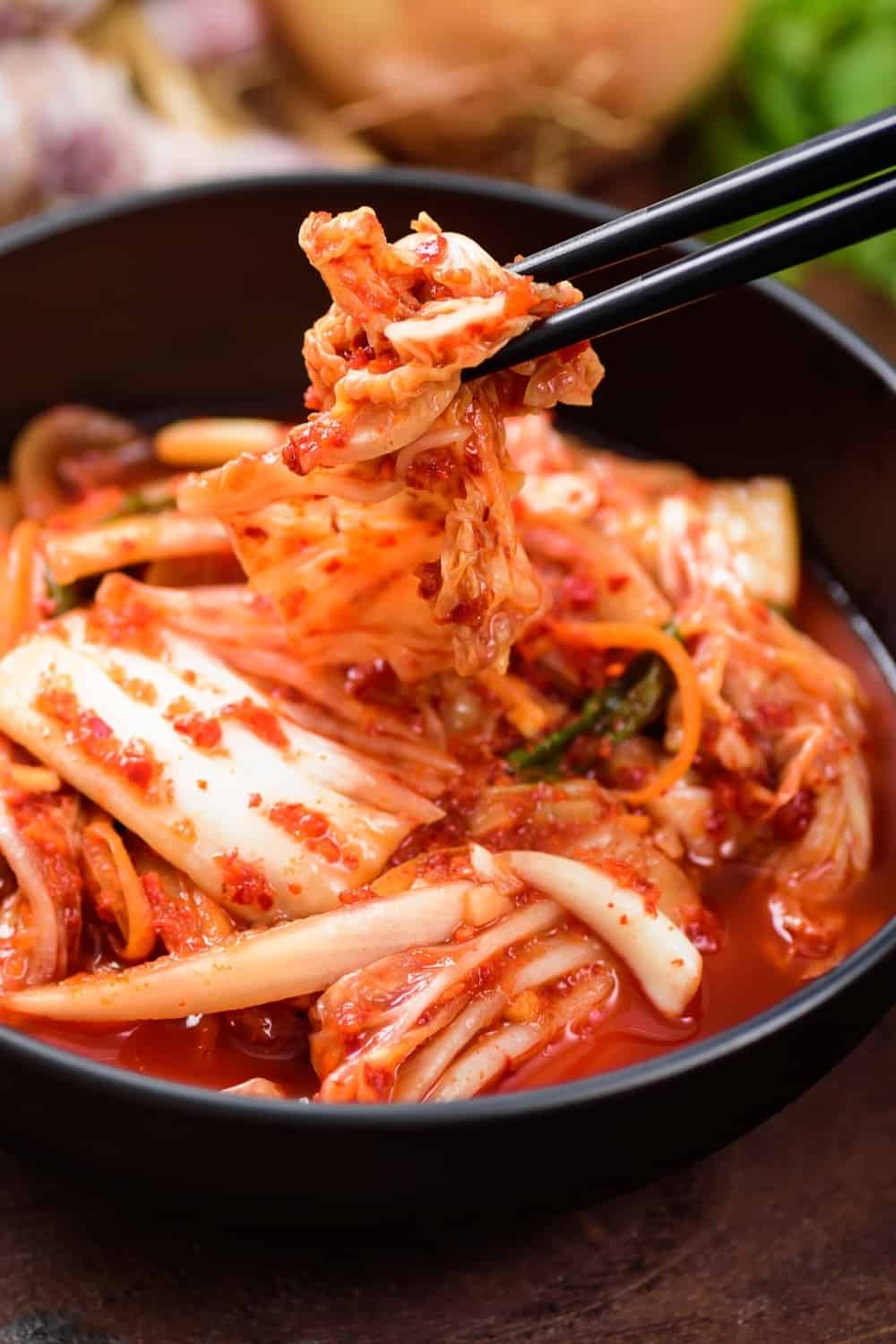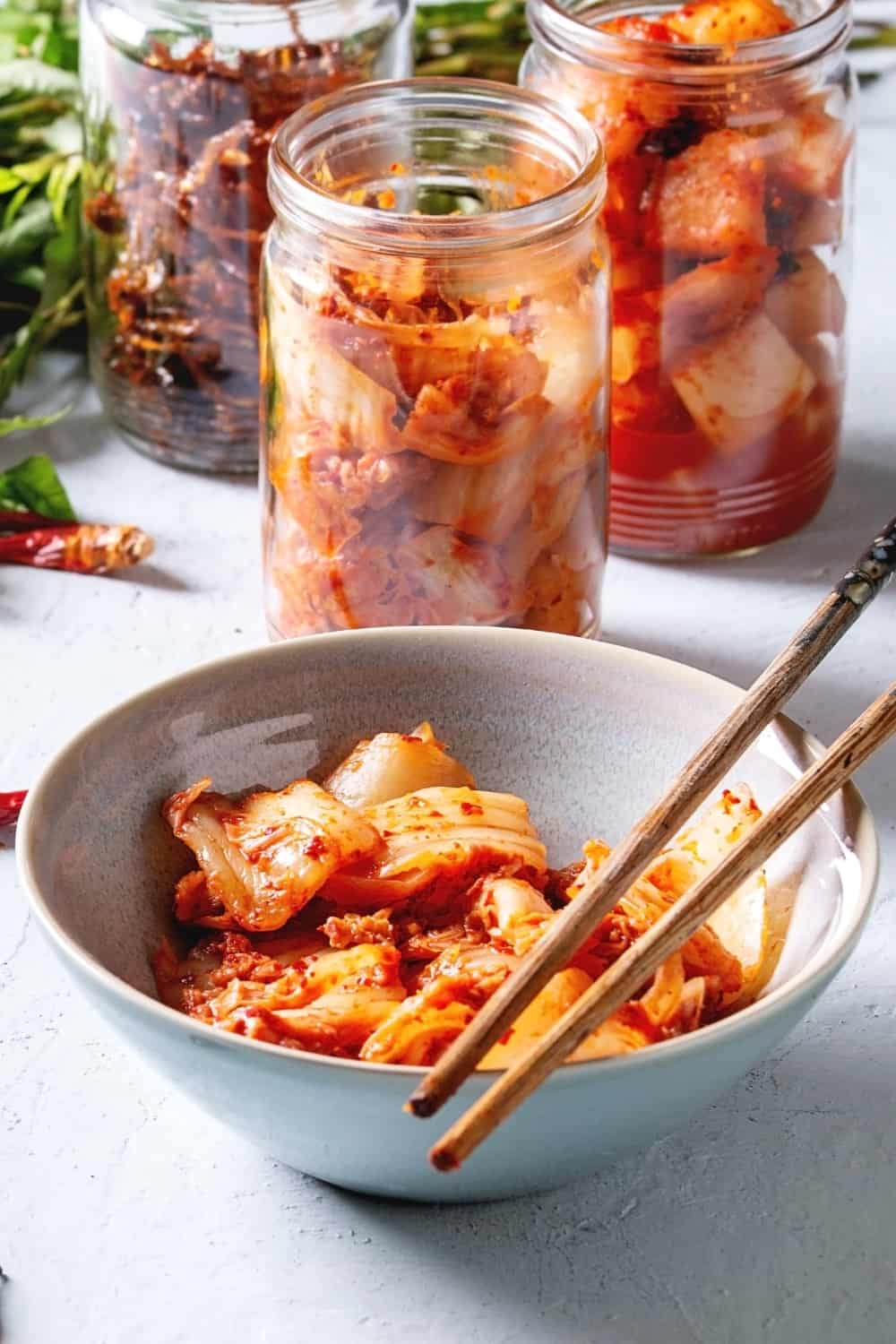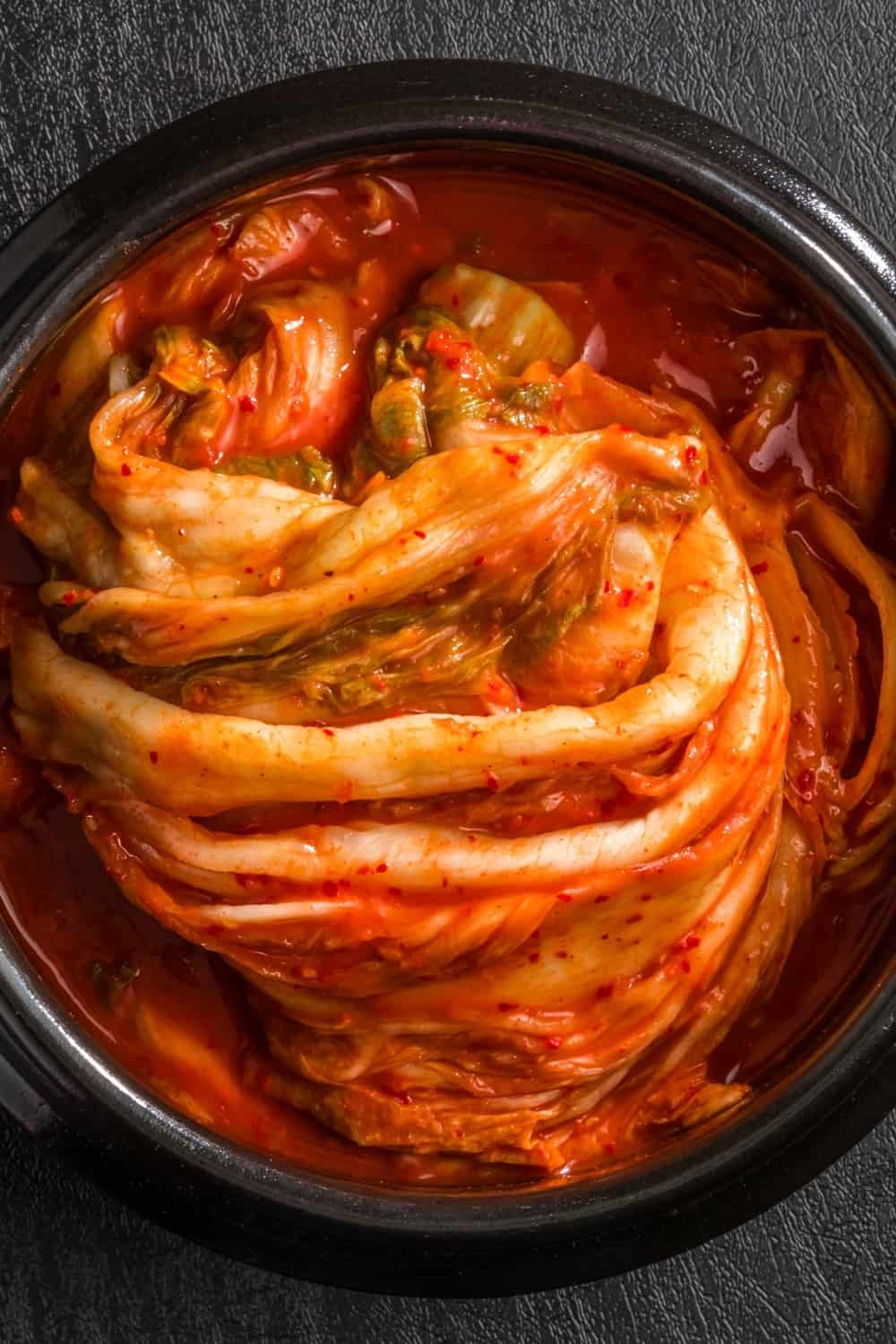If you are into food, you most certainly know what kimchi is. However, if you don’t live in Korea, I assume that you don’t know much about this amazing and complex food.
Kimchi is a type of food that can not be explained in one sentence. That is because it contains many different ingredients and comes in lots of different variations.
Aside from that, kimchi is a very versatile food and it is used as a side dish, condiment, and dip, especially in Korean cuisine.
So, what is kimchi exactly and what does it taste like? As I already said, this question can not be answered in one sentence, but I can say that the flavors of kimchi can range from sweet and sour to spicy and even umami.
If you want to know more about kimchi and kimchi flavor profiles, continue reading.
What Does Kimchi Taste Like?

As already stated in the introduction, kimchi is a very complex ingredient with an even more complex flavor profile. So, in order to understand it, you first have to know what kimchi is made of and what the different varieties of this ingredient are.
What’s In Kimchi?
The simplest definition of kimchi is that it is a fermented vegetable dish made from various types of veggies. However, the types of veggies in it and the exact process of fermentation vary greatly.
The standard kimchi’s main ingredient is napa cabbage. Some people also tend to use the flavor of bok choy in some cases.
The cabbage is brined in salt and some other ingredients including ginger, garlic, green onions, and gochugaru which is known as bright red Korean chili powder that gives your kimchi a recognizable red color.
However, the sky’s the limit when it comes to making kimchi because there are plenty of other ingredients that can be incorporated into it. For example, if you are interested in experimenting with flavors, you can also use pasilla or poblano to make your perfect kimchi.
Also, in some types of kimchi, vegetables like cucumber, and Korean radish can be incorporated as well.
Aside from veggies, some kimchi producers add various types of fish into their kimchi and those may include fermented anchovies and shrimp. Some even add fish sauce as an alternative.
I am emphasizing this because the types of ingredients that are used, as well as their amount, can greatly impact the overall flavor profile of your kimchi as you will be able to see below.
Kimchi Flavor Profile

Kimchi is a very complex dish in terms of the flavor profile. In general, kimchi’s flavor profile is sour, spicy, sweet, and umami.
The only real question is what flavor will predominate. There are a few factors that determine that and those include which ingredients are incorporated into the kimchi, the number of ingredients, as well as the time of the fermenting process.
The first and most recognizable taste of kimchi is definitely a sour taste. That sour taste is a direct consequence of the fermentation process.
Namely, during the fermentation process, harmful bacteria are first replaced by good bacteria, called lactobacillus, and these good bacteria preserve kimchi.
After that, the good bacteria convert the sugar present in the veggies into so-called lactic acid, which preserves those same veggies and gives kimchi that strong sour taste.
So, the longer it’s fermented, the sourer it becomes. The fermentation process usually lasts 3-4 days, while the shelf life of kimchi at room temperature is up to 1 week.
Another taste that can be present in kimchi to some extent is a sweet taste. That sweet taste is mostly produced by the sugar added to the kimchi.
However, since the fermentation process converts sugar into lactic acid, the more kimchi ferments, the less sweet it becomes.
The salty taste mostly comes from the salty brine that is created during the fermentation process to kill harmful bacteria. The level of saltiness mostly depends on the amount of salt added to the kimchi.
Aside from the salty brine, a more salty flavor can be provided by fish or fish products if they are added to the recipe, of course. That fish is also responsible for the umami flavor of your kimchi.
Vegans also add the taste of seaweed instead of fish, which can provide their kimchi with a specific umami flavor as well.
Finally, gochugaru (red Korean chili powder) will give it a certain amount of spiciness.
Below, you will see how spicy kimchi can be.
How Spicy Is Kimchi?

Since red Korean chili powder is incorporated into most traditional types of kimchi because of that recognizable red hue, most types are spicy to some extent.
However, the exact level of spiciness mainly depends on the amount of that same ingredient. Versions of kimchi, therefore, vary from mild to very spicy.
Aside from that, the fermentation process can also influence the spiciness level since sour, spicy, and tangy flavors intensify over time as the vegetables ferment.
Another factor that influences the spiciness level of kimchi is the type of veggies. Some vegetables like green onion, daikon radish, and carrots may help to balance the spice level of the dish.
What’s more, some people add other spicy ingredients that can spice up the dish even more and some don’t even add any spicy ingredients, leaving the kimchi without that unique flavor.
One of those types is known as Baek kimchi or white kimchi.
Does Kimchi Taste Like Sauerkraut?

Kimchi and sauerkraut have many similarities, as they are both fermented foods and they both can provide you with similar health benefits.
However, although they share some specific flavors in their flavor profiles, they actually do not taste the same.
Sauerkraut is made from only two simple ingredients and those ingredients include cabbage and salt. They give sauerkraut a tangy and slightly sour flavor that is quite mild.
Kimchi, on the other hand, possesses a long list of ingredients, from Napa cabbage to various seasonings that are often quite strong and spicy. This gives the kimchi a more complex flavor that is a combination of sour, sweet, spicy, and umami flavors.
Aside from different ingredients, kimchi and cabbage go through different fermentation processes. Cabbage is fermented slowly, i.e. for longer periods of time in cooler temperatures. This results in a milder flavor profile.
Kimchi, on the other hand, is fermented for only a few days or a few weeks at room temperature and this process leaves it with a much stronger and more complex flavor profile.
Finally, there are differences in the types of bacteria in these two fermented foods. Although both possess bacteria from the group of so-called lactic acid bacteria (LAB), the specific types are different, so they leave different flavors as well.
These bacteria are mainly responsible for certain health benefits of kimchi.
What Do You Eat With Kimchi?

Many people tend to eat it on its own, just for its health benefits. But did you know that you can add kimchi to various types of food for a deeper and more complex flavor, and a touch of spiciness? Let’s see how it can be used.
• As A Side Dish: One of the most obvious ways to use kimchis is as a side dish. In fact, many Koreans eat it alongside rice, as well as some other foods like grilled meat and other types of dishes.
• Kimchi Fried Rice: Kimchi fried rice, also known as Kimchi bokkeumbap, is one of the most popular dishes in Korea because it is a quick and simple one-pan meal with delicious chewy rice and the complex flavor of kimchi.
• Kimchi Stew: Kimchi can be added to soups and stews as well and one of the most popular kimchi stews is the so-called Kimchi-jjigae. It is a healthy stew with a complex flavor and a touch of heat.
• Soba Noodle Salad: One of the most popular salads in Korea is definitely a Korean noodle dish known as Bibim guksu.
It is the perfect combination of chewy noodles with a light texture and flavor and kimchi that provides it with a deep flavor that is quite spicy.
• Sandwiches And Tacos: If you don’t have the time to make one of these more complex types of dish with kimchi, you can simply add it to your sandwich or tacos and provide it with the tangy and spicy flavors that it deserves.
These are just a few of the most popular ways to use kimchi for culinary purposes. However, since it is such a complex dish and versatile as well, the sky’s the limit when using it in the kitchen.
FAQs

What Does Kimchi Smell Like?
Although the exact smell of kimchi mainly depends on the ingredients used and the fermentation process, just like its flavor profile, it generally has a strong, pungent odor.
The fermentation process, i.e. the lactic acid bacteria, is a direct cause of the distinct, slightly sour smell. And the longer kimchi ferments, the stronger and more distinct its smell becomes.
Taste Of Kimchi Summary
There is not much left to say about the taste of kimchi. Everything is explained above.
So let me sum up the answer to the question “What does kimchi taste like?”. Well, kimchi is a fermented vegetable dish with a very complex flavor profile.
In general, it is a unique combination of sour, sweet, salty, spicy, and umami flavors whose intensity mainly depends on the ingredients used and the time of the fermentation process.

